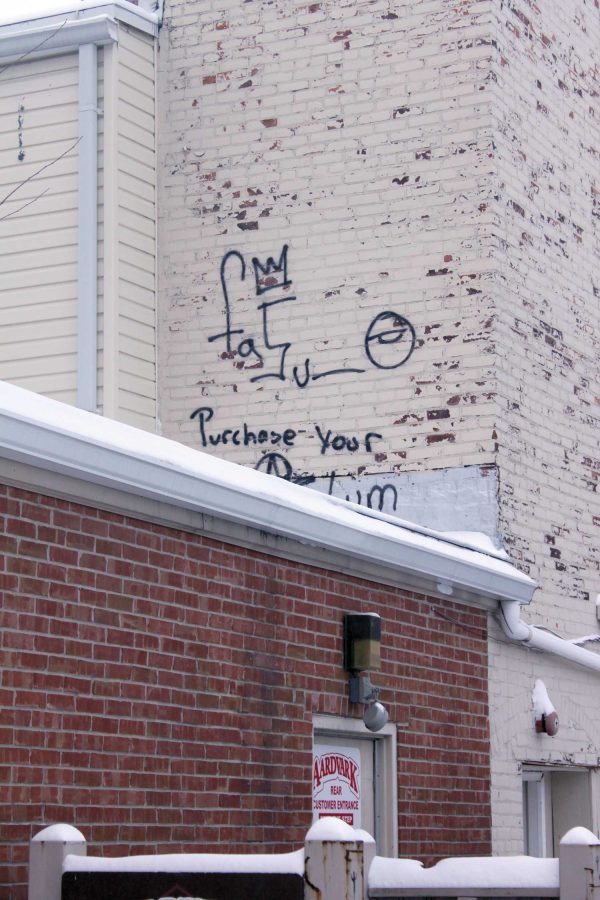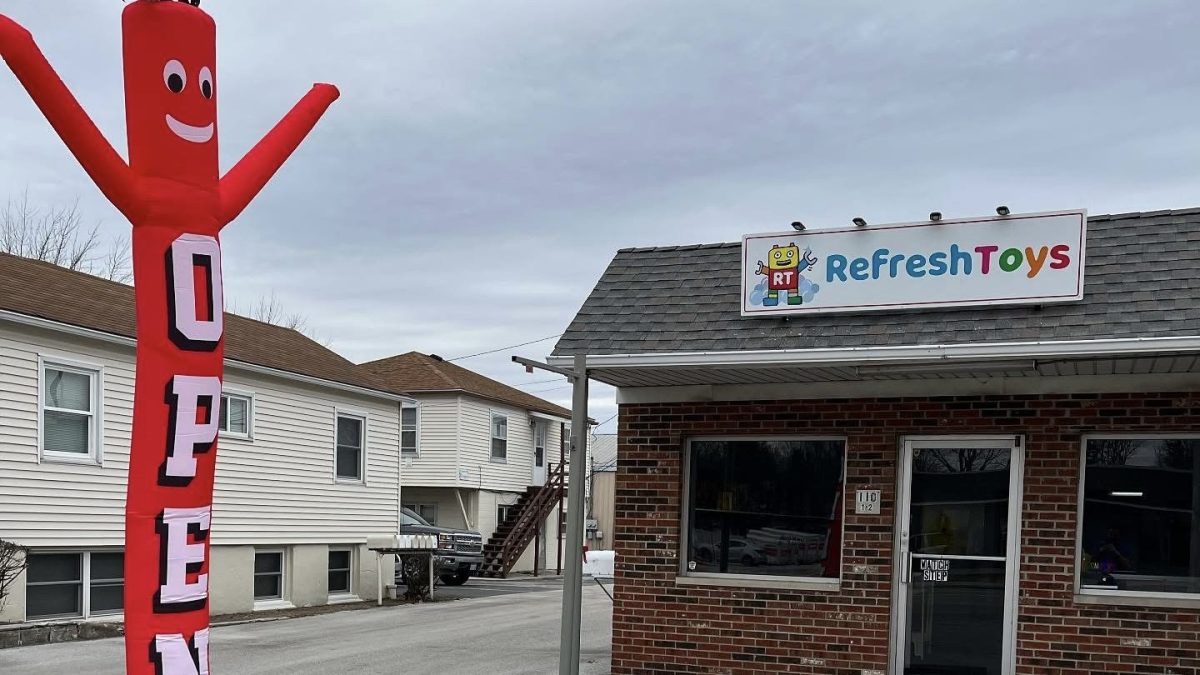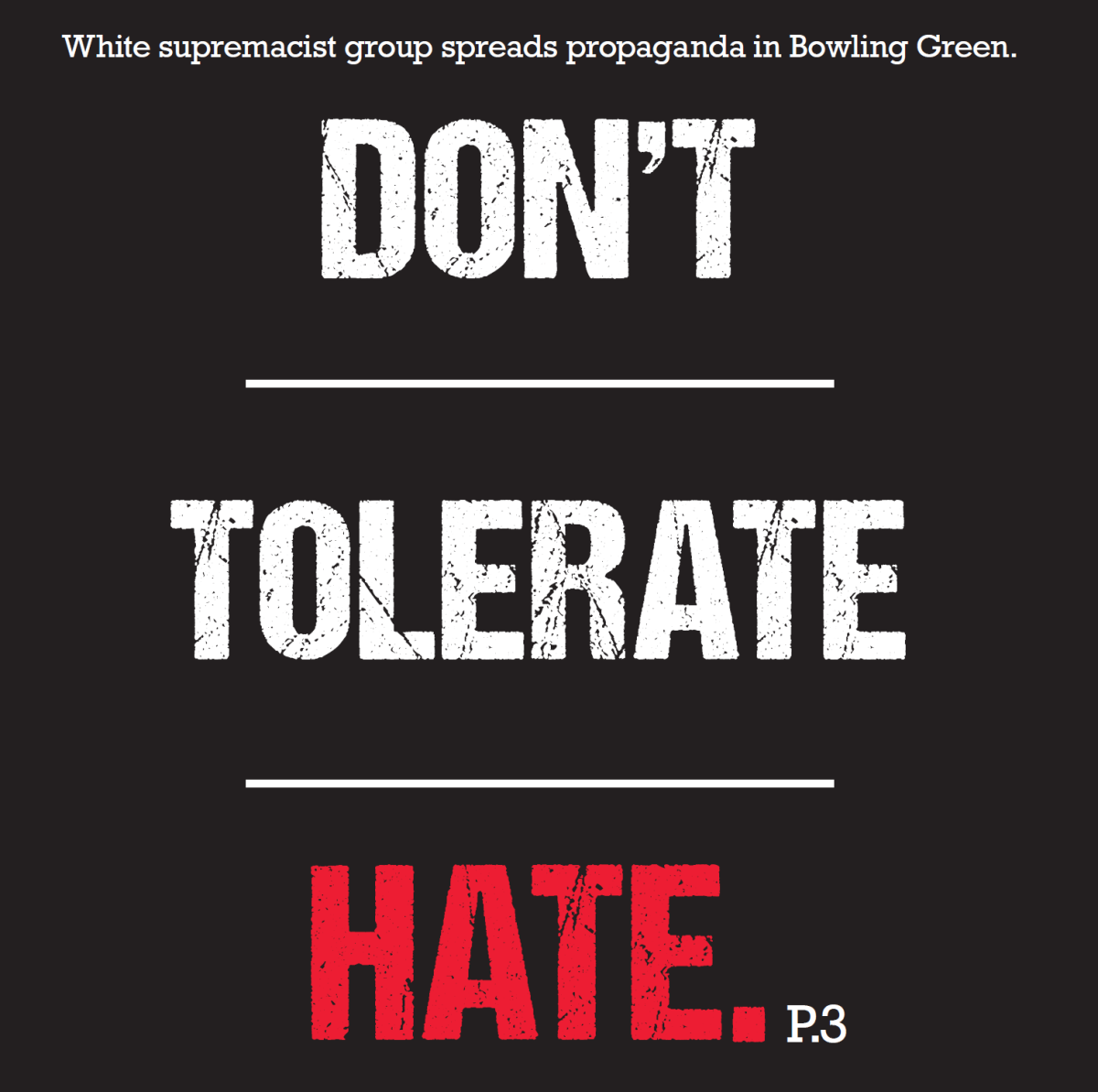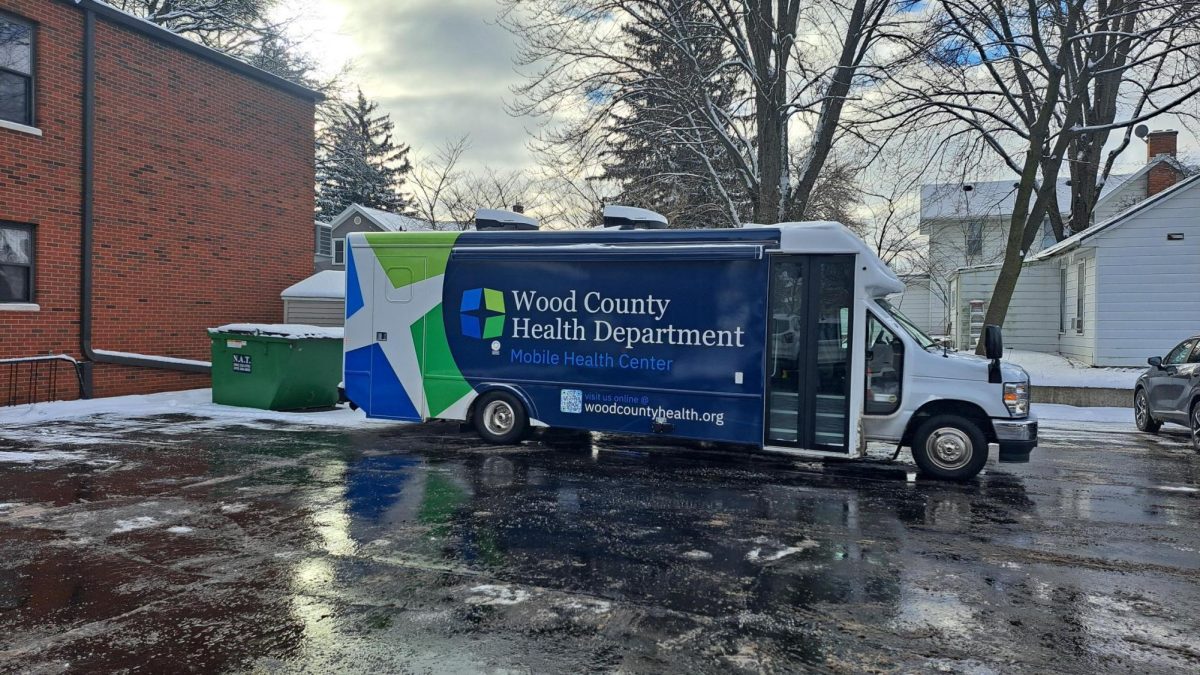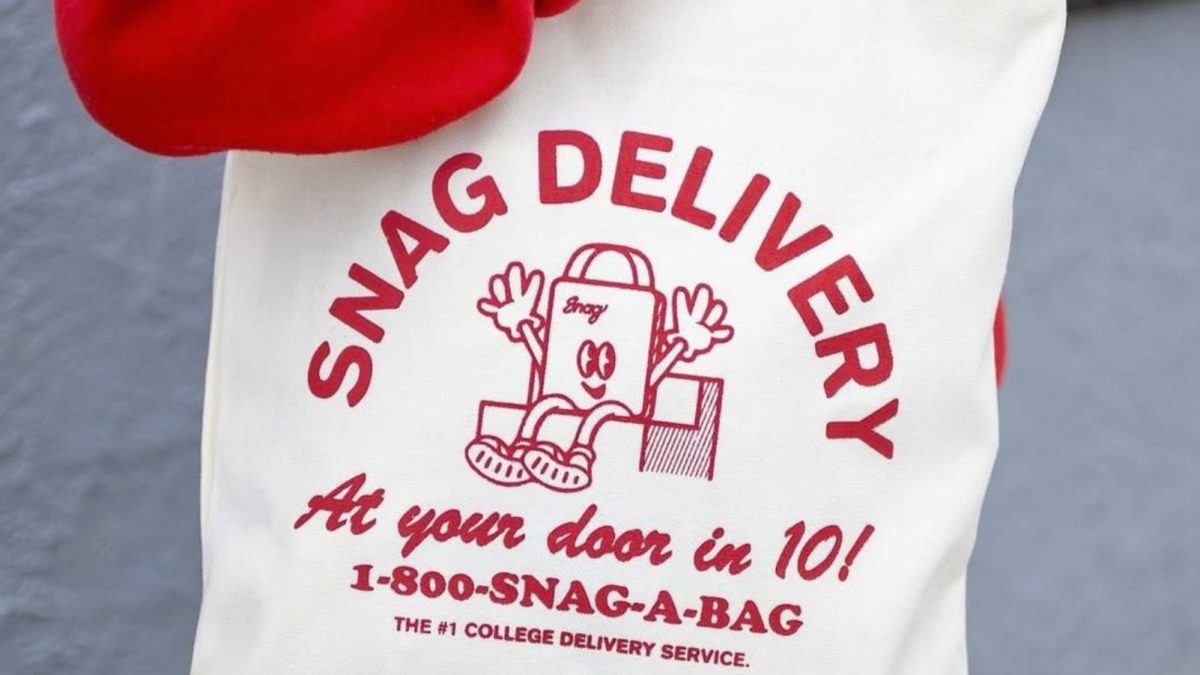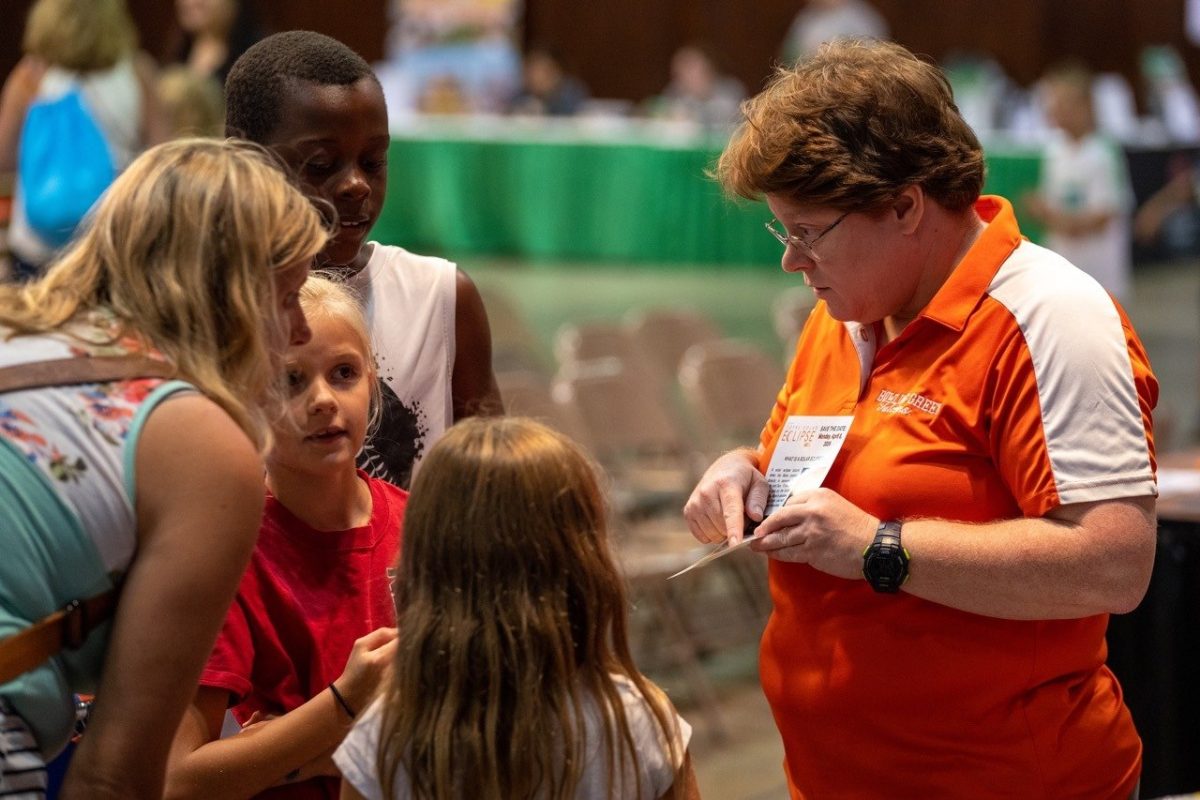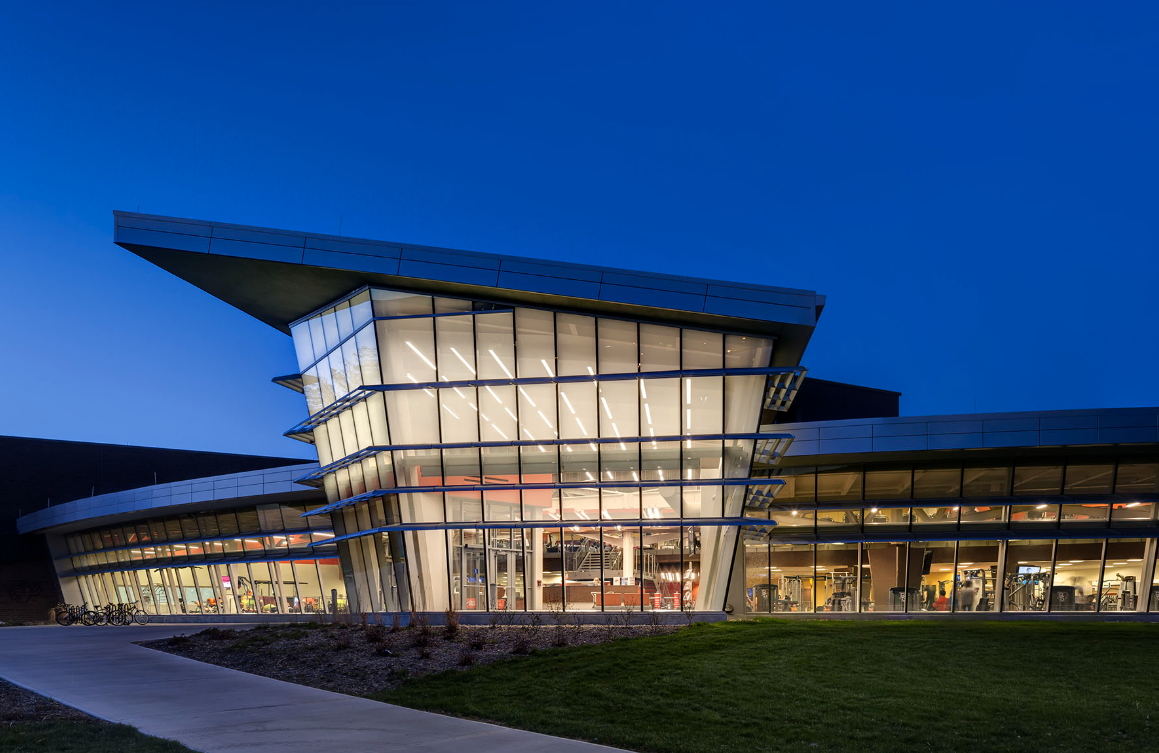A masked artist hovering over the Bowling Green city sidewalk downtown is but a shadow in the night, about to show his true colors across town.
He calls it graffiti art. His paintbrush? A half-empty spray can.
This particular graffiti artist, who asked to remain anonymous, has tagged more than 80 buildings, sidewalks and public properties throughout Bowling Green, Cleveland and Pittsburgh. He uses the tag name of “fa5v_o,” or Five-O, a slang term for police.
The tag is about “offering a different perspective on things for your mind to entertain,” said Five-O, a former University student. “Maybe it will elucidate a freedom for you.”
During the past three years in Bowling Green, there were a reported 49 cases of graffiti, a little more than a quarter of which were Five-O’s work, according to police reports. A handful of those were reported on the same day.
A sense of rebellion towards his hate for the system switched his canvas from paper to buildings in December 2010.
“I’ve been this way since I was a kid,” he said.
The reoccurring tag name was accompanied by one of many of his drawings, which was a star with an eyeball in it with a crown on top. Five-O said the star-eye represents “the concept in philosophy of your own perspective,” and the crown represents “a key perspective.”
One night, while relaxing reading a book, he received a call from the Bowling Green Police Department, as they had been following his graffiti tag for a while.
The call did not surprise Five-O, who knew why they were calling and went into the station.
“At first I was like, ‘oh, no I don’t know what you are talking about,’ and then they arrested me,” he said.
Five-O was jailed for the weekend and had to pay fines for the damage.
“I knew what I was doing was illegal,” he said. “I wanted to do anything to spread the word.”
The Art of Crime
While graffiti may be offering something for artists like Five-O, it’s not for the town.
Graffiti became a problem for business owners downtown 15 years ago and it continues to be a problem.
“Graffiti is cyclic, but I consider this problem a static issue for the last couple of years,” said Lt. Bradley Biller of the Bowling Green Police Division.
Graffiti has appeared on buildings such as Beckett’s and Panera Bread, as well as the train station, trash cans and the cement walls by Heinzsite Apartments.
Police categorize graffiti as criminal mischief, criminal damage or vandalism.
Graffiti is usually affiliated with a gang, a way to identify one’s self or make a political statement, Biller said.
Doug Allen with the Toledo Police Gang Task Force said gangs are usually the ones tagging buildings in Toledo, but they don’t usually travel.
“People who do graffiti are claiming their territory, so if [Bowling Green] has gangs, they most likely are not from Toledo,” Allen said.
Allen did not comment as to if the problem was growing or not in Toledo, but said they still receive reports of it.
“We want to catch them all,” he said. “They think it’s art, but it’s illegal to damage something that isn’t yours.”
Five-O said graffiti gives a sense of culture to the town.
“Yes, it damages buildings, but it’s also providing something for people to look at and admire,” he said. “It’s a form of expression and meaning for lots of artists.”
It is also considered a genuine form of art by the Toledo Museum of Art.
“Graffiti has a legitimate artistic medium to it, but I think it’s better outside of a museum than inside,” said Halona Norton-Westbrook, an expert on art at the museum.
The cameras surrounding certain spots in downtown Bowling Green help monitor places that have been targets for graffiti. Common targets include Main and Wooster streets; it also happens on the University campus.
Lt. Tim Guthrie of University Public Safety said the most common thing they see are chalking and spray paint on sidewalks to advertise for an organization.
Guthrie said it’s technically illegal to spray paint on sidewalks.
“People can do it in good taste,” Guthrie said. “It usually washes away in the rain.”
A High Price Tag
While the sidewalk graffiti is a quick fix and costs no money to get rid of, Barbara Ruland wishes she could say the same for graffiti on buildings, which can take thousands of dollars to remove.
“We usually alert property owners when we see it,” said Ruland, executive director of Downtown Bowling Green, which is a group of business and property owners.
Ruland and other members of Downtown Bowling Green are currently working on stopping the problem by removing the graffiti as soon as possible.
Since the issue has come to the forefront in the past couple of years, Tina Bradley, city grant administrator, is currently working on getting funding for graffiti removal.
Ruland is sending emails to property owners to see where graffiti is in order to know what the cost will be.
“This plan is in its first stage,” Bradley said. “We just hope this helps.”
Ways to remove graffiti from buildings include sand blasting, water pressure or chemicals.
“What people don’t seem to make out is that people are struggling to make ends meet,” Ruland said. “They’re hurting another individual.”
Nobody wants to buy into a problem, Allen said.
“Think about a building that is seven feet high and multiply that by $3,000 and a couple of hours,” Allen said. “It devalues the property.”
Norton-Westbrooke said it all depends on the circumstances of the art.
“It’s about the content, level of craftsmanship and how it is executed,” she said.
Even though Five-O is an advocate of graffiti he is worried about its reputation.
“If people continue to put up graffiti in a negative way, people will look down on art,” he said. “It can be a good thing.”


